To determine what and when to plant in April, you can use folk signs:
- The crocuses have bloomed - it's time to plant carrots.
- The birch trees have turned green - plant potatoes.
- The daffodils have bloomed - it’s time to plant cabbage seedlings in the ground.
In March, not all summer residents have time to visit their dachas, but in April only the most indifferent postpone work in the garden.It is necessary to harrow the soil dug up in the fall as quickly as possible, sow early vegetables, install temporary film covers, sow fast-growing cold-resistant (mustard, phacelia) green manure in the beds that will be occupied by heat-loving vegetables.
Preparing warm beds for early sowings
If it is possible to “obtain” fresh horse or sheep manure, you can quickly set up warm beds for growing seedlings and early vegetables.
We loosely fill the groove dug on the bayonet of a shovel (it should not be narrow, at least 80-90 cm wide) to the top with fresh manure, throw a twenty-centimeter layer of earth on top, into which we will sow the seeds.
We cover the top of such a bed with non-woven material on arches. To ensure that the seedlings have enough light, it is better to take a new non-fabric or wash the old one.
If there is no manure, we will make do with a solar heated greenhouse. Now they sell collapsible greenhouses of various sizes. They are installed over the prepared bed in a few minutes.
You can simply cover the bed with a frame covered with film, or insulate the area with film on the arches. The simplest shelter will allow radishes, lettuce, spinach, carrots, onions sown with nigella, and kohlrabi to sprout earlier than in open beds.
Seeds of cold-resistant crops begin to germinate at low positive temperatures, but if the microclimate is warmed by several degrees, seedlings will appear faster and plants will develop more actively.
What crops are planted in April?
We sow peas as early as possible: they sprout and develop better in cool weather. Its seedlings are not afraid of morning frosts.
Let’s try to sow an early variety of turnip: we must try the “grandfather’s” vegetable. Maybe it will be possible to grow root vegetables before the heat comes.
The soil in April is still wet, but before sowing we spill the furrows with water warmed in the sun, and cover the seeds with loose soil. After sowing, lightly compact the surface of the beds.
They begin to sow in open beds in April, when crocuses bloom in the garden.
A small greenhouse can be equipped for sowing seeds and picking tomato seedlings. You can sow dry tomato seeds directly into the garden bed and cover the arches with film.
The result will be low film tunnels that will provide favorable conditions for friendly shoots and at first will protect the seedlings from changes in April weather.
On warm days, such shelters can be slightly opened or removed, accustoming the tomatoes to direct sunlight and wind, and in May they can be removed altogether.
Potatoes are planted in April
At the beginning of April, we continue to prepare potatoes for planting: while inspecting the tubers, we remove diseased, unsprouted ones with thread-like sprouts. We change the tubers in places, achieving their uniform illumination (to make them greener better), but remember that direct sunlight is contraindicated for them.
Some summer residents germinate cleanly washed tubers in plastic bags, having previously made holes in them. In more humid conditions, not only eyes, but also roots begin to develop on the tubers. It’s just important not to break off both during transportation and landing.
Immediately before planting (and we usually plant potatoes in the 1st-2nd decade of April), the tubers can be sprayed with extrasol solution: tbsp. spoon per 100 ml (half a glass) of water, consumption - per 10 kg of tubers.
This is done in order to suppress the development of fungal and bacterial diseases and stimulate the development of the root system of future plants.
When warm weather sets in (the birch trees turn green), we plant potatoes, even if the eyes of the tubers have not reached the required centimeter length: the tubers become more active in the soil faster.
Where is the best place to plant potatoes?
It is very important to choose the right area for planting potatoes and prepare it. Compliance with crop rotation sharply reduces the likelihood of potatoes becoming infected with fungal and bacterial diseases.
Winter grain crops (rye, wheat) are considered good predecessors for potatoes. Favorable soil conditions are created for potatoes by fallow (areas that were rested last season).
Potatoes should not be planted after nightshade crops (tomatoes, peppers, eggplants) tubers are more severely affected by scab in areas where carrots and beets grew before potatoes.
Prepare the soil before planting
Of course, it is better if the area for planting potatoes was dug deep in the fall. If this has not been done, you will have to wait until the earth “reaches” and will crumble during digging without forming lumps.
They dig with a shovel: the root system of the potato, which is mainly located at a depth of 20-25 cm, should develop in a loose layer, well provided with moisture and air. In over-compacted soil, potatoes are severely affected by fungal diseases.
On light cultivated soils, tubers grow tasty and accumulate more starch. It is advisable to improve heavy soils for potatoes by adding organic fertilizers (humus, compost).
Planting cabbage
In the second half of April we plant in the beds hardened cabbage seedlings - Brussels sprouts, Beijing sprouts, cauliflower, cabbage, broccoli, kohlrabi. You can navigate by the flowering of early daffodils growing in the sun.
In cool April weather, cabbage takes root well and begins to intensively grow leaves. In case of severe cold weather, it is necessary to provide temporary cover for plants with non-woven material or film.
Planting tomato seedlings
When the soil in the greenhouses at a depth of 10 cm warms up to 14 degrees, we plant them in unheated greenhouses tomato seedlings. To plant seedlings or sow cucumber seeds, we will wait for warmer weather. Cold soil is fraught with root rot for these heat-loving plants.
If the soil in the greenhouse has not been changed for a long time, it is generously moistened with extrasol solution: 10 g (tablespoon) per 10 liters of water, consumption - 7-8 liters of working solution per square meter. m. This helps to populate the soil with beneficial microflora and suppress pathogenic ones.
We continue with indoor crops
Around mid-April, at home or in a greenhouse, we sow cucumber and zucchini seeds in separate cups so that in May we can plant ungrown seedlings in open ground. For a large garden, you can sow the seeds of squash, pumpkin, watermelon, and melon in the same way.
Indoor sowing gives us a race in time (we'll get the harvest earlier), makes our work in the garden more rational and productive, allowing us to quickly plant seedlings at the required distance and immediately obtain exemplary beds without overseeding or thinning.
In addition, indoor sowing saves seeds: in cups under our supervision they germinate almost one hundred percent.
Caring for seedlings
We plant seedlings of nightshade plants (tomatoes, peppers, eggplants) for open ground, feed them (1 g of complex fertilizer per liter of water), and begin to harden them in the open air. In April, it is not too late to sow tomatoes as seedlings - in small cassettes or cups, so that in May (without picking) they can be planted in open ground.
We try not to spoil the seedlings that have begun to outgrow: we lower the temperature (open the windows or take the plants out onto the loggia), water less, do not feed with nitrogen, and improve the lighting.
We are preparing for planting late crops in April
In April we prepare the beds for late crops.
First, we destroy the weeds
You will especially have to tinker where perennial weeds grow: dandelions, wheatgrass. By removing the dandelions (always with the roots), they can be dried to later be used for spraying against pests, or preparing green fertilizer.
We dig up the beds where the wheatgrass has “arrived” with a pitchfork, carefully selecting the rhizomes. Digging with a shovel or, with even worse consequences, cultivating the soil with a motorized cultivator creates conditions for even more rapid development of wheatgrass: every piece of rhizome left in the ground gives life to a new plant.
We do not leave the area clogged with wheatgrass without attention later: we often loosen it, removing every sprouted young leaf. Spring sampling of wheatgrass rhizomes and careful weeding during the season allows you to free the soil from the malicious weed without the use of chemicals.
Read how to effectively control weeds here.
At the end of April, we dig up green manure (both overwintered and sown in spring) in areas allocated for planting seedlings of heat-loving crops.
Vitamins after winter
Let's take care of perennial vegetables.Let's loosen the soil in the beds of perennial onions, sorrel, and rhubarb. In order for vegetables to yield leaves faster, we cover the beds with non-woven material.
It is not necessary to feed vegetables on fertile soil; it is enough to mulch the warmed area with humus or compost, and in poor beds give the vegetables a little nitrogen (0.5 tablespoons of urea per sq. m). We feed the rhubarb and asparagus with complex fertilizer (a tablespoon per square meter).
As soon as the soil on it has warmed up, we will cover the bed with asparagus with a layer of humus or compost 20-25 cm thick. We will level the upper part of the mound so that later, in time, we can dig up the grown bleached shoots, cut them and serve them.
Don't forget about garlic
Don’t forget to take care of the garlic: loosen the soil in the garden bed, feed the plants with urea (a tablespoon per square meter). When the garlic begins to actively grow, we will provide it with more complete nutrition - 2 tbsp. spoons of complex fertilizer per sq. m.
At the beginning of April, it is not too late to plant the garlic remaining after winter in the garden, choosing well-preserved cloves. As a rule, sprouts have already appeared on them and roots have sprouted. Dried cloves with rotten bottoms should not be planted.
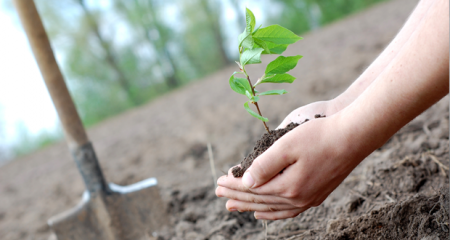
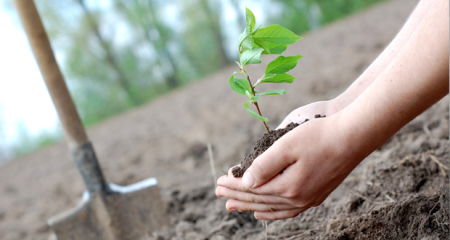

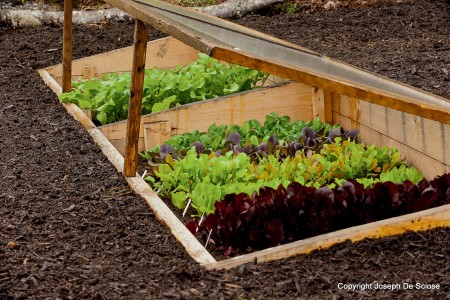
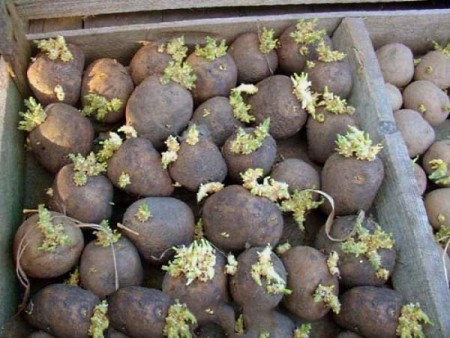
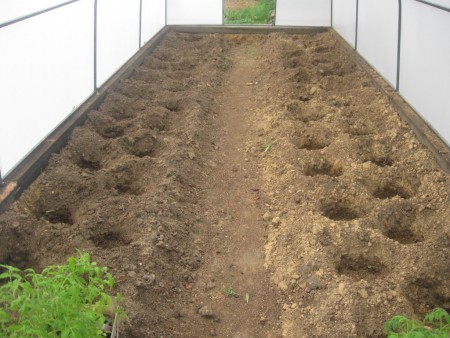
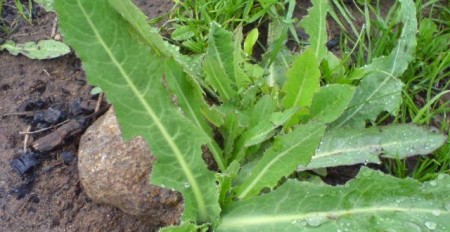

 (6 ratings, average: 4,33 out of 5)
(6 ratings, average: 4,33 out of 5) CUCUMBERS NEVER GET SICK, I'VE BEEN USING ONLY THIS FOR 40 YEARS! I SHARE A SECRET WITH YOU, CUCUMBERS ARE LIKE THE PICTURE!
CUCUMBERS NEVER GET SICK, I'VE BEEN USING ONLY THIS FOR 40 YEARS! I SHARE A SECRET WITH YOU, CUCUMBERS ARE LIKE THE PICTURE! You can dig a bucket of potatoes from each bush. Do you think these are fairy tales? Watch the video
You can dig a bucket of potatoes from each bush. Do you think these are fairy tales? Watch the video
 How our fellow gardeners work in Korea. There is a lot to learn and just fun to watch.
How our fellow gardeners work in Korea. There is a lot to learn and just fun to watch. Eye trainer. The author claims that with daily viewing, vision is restored. They don't charge money for views.
Eye trainer. The author claims that with daily viewing, vision is restored. They don't charge money for views. A 3-ingredient cake recipe in 30 minutes is better than Napoleon. Simple and very tasty.
A 3-ingredient cake recipe in 30 minutes is better than Napoleon. Simple and very tasty. Therapeutic exercises for cervical osteochondrosis. A complete set of exercises.
Therapeutic exercises for cervical osteochondrosis. A complete set of exercises. Which indoor plants match your zodiac sign?
Which indoor plants match your zodiac sign? What about them? Excursion to German dachas.
What about them? Excursion to German dachas.